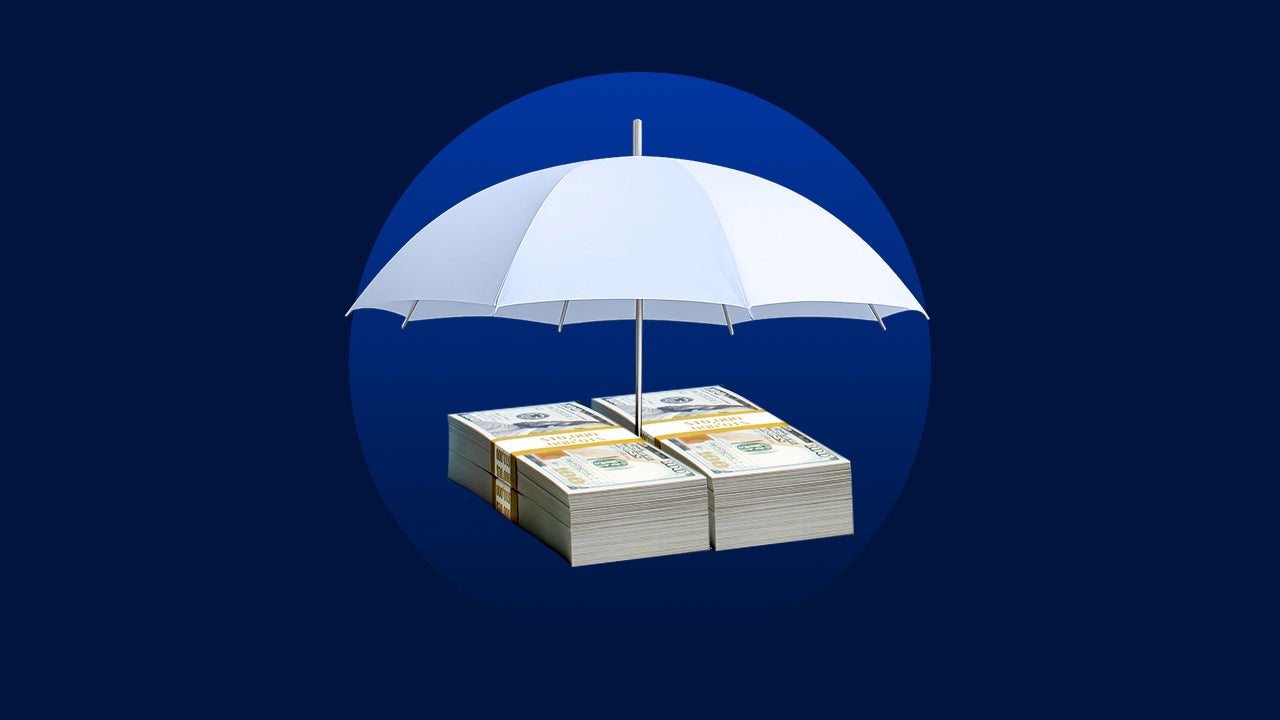Image by Getty Images; Illustration by Bankrate
Key takeaways
- Loan protection insurance could help you pay for some or all of your personal loan in certain hardship situations, such as an unexpected layoff.
- A major downside of loan protection insurance is the cost, which can make your loan more expensive.
- In most cases, loan protection insurance is not worth the added cost because your other insurance policies may provide adequate protection.
Personal loan protection insurance can be a useful tool to help protect you from defaulting in the event of an emergency. Also referred to as credit insurance or loan protection credit insurance, it can provide peace of mind since your loan payments are taken care of if a covered event happens. Nevertheless, the added security of this coverage can be costly, and in some cases, unnecessary.

Best personal loan rates
Thinking about getting a personal loan? Bankrate has all the lenders and stats listed in one page to make your search easier.
Learn more
What is loan protection insurance?
Most loan protection insurance policies cover certain events for a short-term period, relieving you from having to make payments for a set period of time, usually up to 24 months. Covered events generally include death, disability and involuntary employment.
While this insurance protects you from the ill effects of loan default (such as damage to your credit score), it also ensures the lender receives the money it is owed. By paying the lender directly, the insurer knows the funds won’t be spent on another purpose.
How does loan insurance work?
If one of the events outlined in your credit policy takes place, your policy will typically kick in. The policy payout will be paid directly to the lender or creditor. This is what distinguishes credit insurance from other types of policies, such as life insurance, which makes payments to designated beneficiaries, such as family members or yourself.
The coverage depends on the terms of your policy – your insurance may pay off your loan altogether, pay off part of the loan or temporarily take over loan payments.
Keep in mind:
Loan insurance policies generally include exclusions for non-covered events, including those caused by pre-existing conditions.
4 types of loan protection insurance
According to the Federal Trade Commission, there are four types of loan protection insurance, each of which covers different situations.
- Credit life insurance: If you pass away before repaying all of your loans, this policy pays off either some or all of your remaining balance.
- Credit disability insurance: This is sometimes referred to as accident and health insurance, which gives you temporary relief from making payments if you can’t work for health reasons.
- Involuntary unemployment insurance: If you get laid off or lose your job, this policy can cover your loan payments for a while.
- Credit property insurance: When you use personal property as loan collateral, this insurance protects the property itself rather than your loan payments.
How much does loan insurance cost?
Credit insurance is almost always more expensive than other types of insurance, such as term life insurance. The amount you’ll pay depends on the lender you choose and the following factors:
The monthly cost of credit insurance on open accounts fluctuates over time as the balance increases or decreases, while the monthly cost on a closed account remains the same. For the latter, paying the premium up front could mean significant cost savings.
Factors to consider with loan protection insurance
Before you take the plunge and move forward with personal loan insurance, think about these factors:
- Your budget: Loan insurance can increase the overall cost of your loan, so examine your budget. Based on your loan’s principal balance, calculate how much cost the optional credit insurance will add – your lender should be able to provide an exact cost. Compare this amount against your monthly budget to make sure you can afford it.
- Your reason for wanting it: Loan insurance isn’t required. Ask yourself why it’s useful in your situation. If it’s to safeguard your payments in case of sudden, temporary unemployment, for example, consider whether you have other safety nets in place, like an emergency fund or unemployment benefits to fall back on.
- Your other insurance policies: If you have life insurance, for example, credit insurance may not help you. This is particularly true if your reasoning behind it is to avoid debt after death, which might already be included in your life insurance policy.
- The fine print: Read the fine print of any policy you’re considering so that you know what to expect as you make payments toward your credit insurance coverage. Also, find out what will happen in the event that you default on your loan.

Best emergency loan rates
Need an emergency loan? Bankrate’s here to help.
Learn more
What are some alternatives to credit insurance?
The cost of carrying loan protection insurance could easily outweigh the benefits, especially if you carry or have access to these alternatives:
- Term life insurance: If you live in a community property state, this coverage can cover the cost of your outstanding personal loan balance in the unfortunate event you pass away.
- Disability insurance: Whether you’re covered under a short-term or long-term policy through your employer, disability insurance could replace a portion of your income if you experience a work-related injury or become ill and cannot work.
- Emergency savings: A sizable emergency fund could also supplement or replace your income if it drops or is eliminated, helping you stay current on monthly loan payments.
- Lender hardship programs: It’s worth reaching out to your lender if you encounter financial hardship, as some offer concessions to make your loan more manageable.
Is loan protection insurance worth it?
In most cases, loan protection insurance isn’t worth it. There may be policy limitations, and the added costs can make your loan more expensive or increase your risk of default. Life or disability insurance is probably more affordable than investing in credit insurance.
That said, if you have a loan that you can’t defer, for example, or you’re concerned about debt due to a medical condition or unstable job market, it can be an option. The same applies if you want to protect your credit profile and steer clear of interest rate hikes or fees in the event of a default.
Bottom line
While taking out loan protection insurance on a personal loan can help you avoid defaulting in certain situations, it’s not the right move for everyone. It increases the cost of your overall loan, and the policy may only be effective for up to two years. If you can comfortably afford to make payments or have other forms of coverage, it’s better to skip this extra expense and instead focus on ways to pay off your personal loan faster.
Why we ask for feedback
Your feedback helps us improve our content and services. It takes less than a minute to
complete.
Your responses are anonymous and will only be used for improving our website.
Help us improve our content
Read the full article here















